| View previous topic :: View next topic |
| Author |
Message |
kievuser

Joined: 27 Jan 2008
Posts: 551
|
 Posted: Fri Jun 10, 2016 7:53 am Post subject: Posted: Fri Jun 10, 2016 7:53 am Post subject: |
 |
|
kievuser wrote:
| kievuser wrote: |
I know there are Leica copy collectors, but if you are a Zeiss Biotar copy collector, here is an extremely rare Chinese Biotar copy, a Haiou-64 58/5.6 one made for making computer circuits. A Haiou-64 58/2 is a very common normal lens for those Seagull DFs. This and another rare one for the same applications are recently surfaced. The 30mm F1.6 lens was made in 1975 by Shanghai Nr.3 Camera Factory. They are not mine.
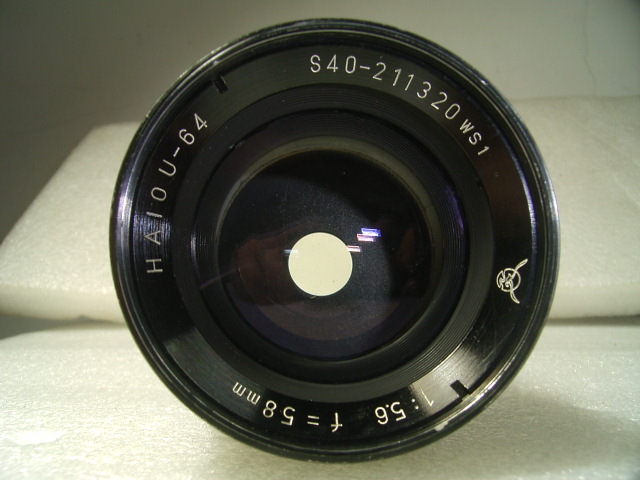 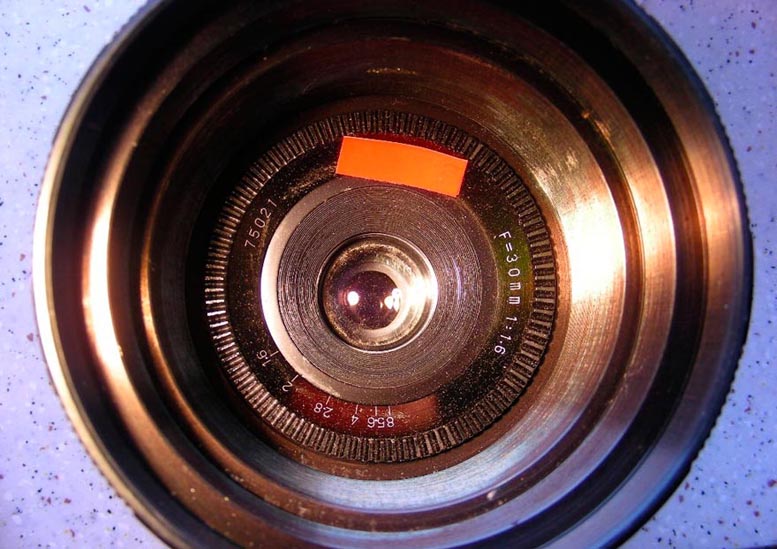 |
I caught this rare Haiou-64 58/5.6 lens today.  But paid about twice price as that of a Canon FD 28-85/4 zoom lens I bought at another shop next door a few days ago. My lens has a s/n of S40-211523. It is a reduction lens of very high quality. But paid about twice price as that of a Canon FD 28-85/4 zoom lens I bought at another shop next door a few days ago. My lens has a s/n of S40-211523. It is a reduction lens of very high quality. |
|
| Back to top |
|
 |
kievuser

Joined: 27 Jan 2008
Posts: 551
|
 Posted: Fri Jun 10, 2016 7:58 am Post subject: Posted: Fri Jun 10, 2016 7:58 am Post subject: |
 |
|
kievuser wrote:
fwcetus , These are beautiful lenses. Thanks for sharing.  I guess these were made for lens collectors. I guess these were made for lens collectors. |
|
| Back to top |
|
 |
fwcetus


Joined: 12 Jun 2015
Posts: 303
Location: New England
|
 Posted: Fri Jun 10, 2016 8:40 pm Post subject: Posted: Fri Jun 10, 2016 8:40 pm Post subject: |
 |
|
fwcetus wrote:
| kievuser wrote: |
fwcetus , These are beautiful lenses. Thanks for sharing.  I guess these were made for lens collectors. I guess these were made for lens collectors. |
Thanks. 
Actually, though, the most widely accepted story is that they were made for fifty VIP managers, distributors, and retailers of Vivitar equipment (a few each in a handful of countries) and given to them as a gift. As far as is known, none were ever actually sold by Vivitar, but some of the fifty sets have made it to the second-hand collectible market over time ever since for various reasons.
And they must be gold-plated brass rather than aluminum (etc.), since they are much heavier. For example, the Pentax Ka-mount VS1 70-210/2.8-4 consumer lens of the time weighs about 740g, while the gold-plated version weighs about 997g.
See http://camera-wiki.org/wiki/Vivitar_Series_1_50th_Anniversary_Lens_Set .
_________________
Fred
If you saw a fellow drowning, and you could either save him or photograph the event . . . What lens would you use ? |
|
| Back to top |
|
 |
kievuser

Joined: 27 Jan 2008
Posts: 551
|
 Posted: Sat Jun 11, 2016 8:43 am Post subject: Posted: Sat Jun 11, 2016 8:43 am Post subject: |
 |
|
kievuser wrote:
Fred, It just occurred to me that the added weight could be that of plated gold, not brass?  |
|
| Back to top |
|
 |
kievuser

Joined: 27 Jan 2008
Posts: 551
|
 Posted: Sat Jun 11, 2016 9:00 am Post subject: Posted: Sat Jun 11, 2016 9:00 am Post subject: |
 |
|
kievuser wrote:
I just learned yesterday that China made some higher grade enlarging lenses such as 6 elements, 4 group design ones. I caught this rare 80/5.6, 6 element-4 group lens yesterday, and disassembled it for a cleaning. The one looks like my other 80mm F4 lens with eactly the same design. But this one has no s/n, and engraved an unknown SOVINY CO. on the front ring. There could be a story that a publicly owned factory changed hands to private person behind this lens.
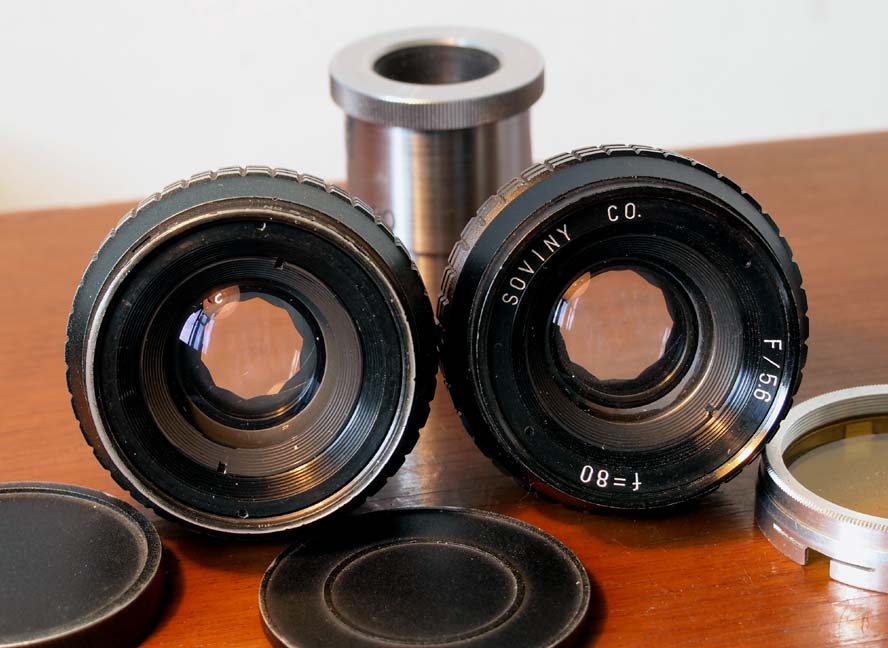  |
|
| Back to top |
|
 |
kievuser

Joined: 27 Jan 2008
Posts: 551
|
 Posted: Sat Jun 11, 2016 9:12 am Post subject: Posted: Sat Jun 11, 2016 9:12 am Post subject: |
 |
|
kievuser wrote:
I briefly tried this Haiou 64 58/5.6 this morning on my EPL-2, and also a Canon FD 50/1.4 at F5.6. This lens looks at least as sharp as the FD 50/1.4, if not sharper at infinate. It should also performs well at closer distance. These industrial lenses were made to a higher quality standard. Even their lens caps were well made and finished.
 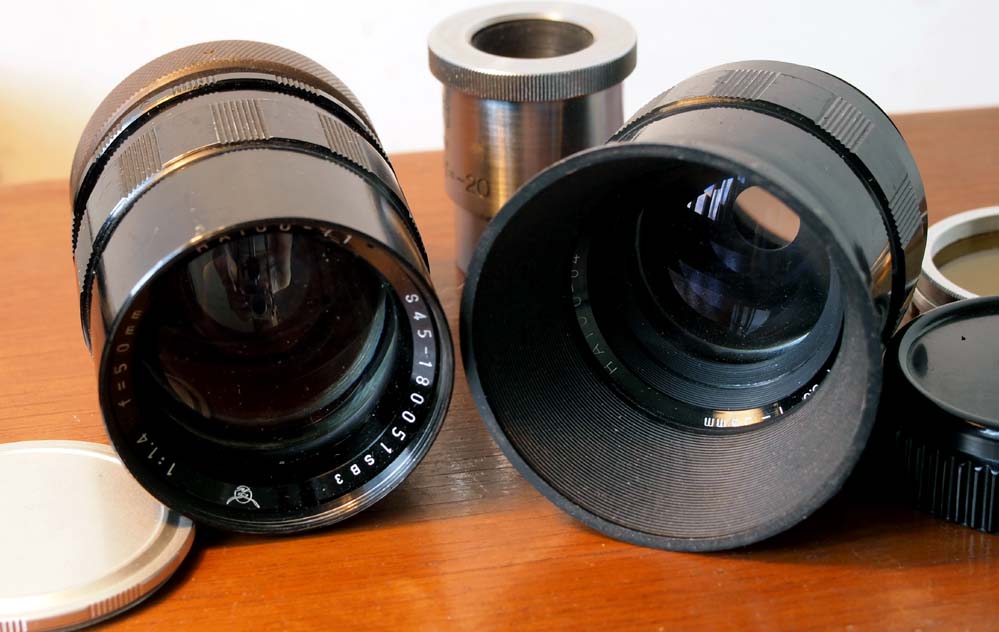 |
|
| Back to top |
|
 |
fwcetus


Joined: 12 Jun 2015
Posts: 303
Location: New England
|
 Posted: Sat Jun 11, 2016 11:57 am Post subject: Posted: Sat Jun 11, 2016 11:57 am Post subject: |
 |
|
fwcetus wrote:
| kievuser wrote: |
Fred, It just occurred to me that the added weight could be that of plated gold, not brass?  |
I suppose... Well, I'll take a hacksaw to one of the barrels to see what's inside...

_________________
Fred
If you saw a fellow drowning, and you could either save him or photograph the event . . . What lens would you use ? |
|
| Back to top |
|
 |
kievuser

Joined: 27 Jan 2008
Posts: 551
|
 Posted: Sat Jun 11, 2016 12:35 pm Post subject: Posted: Sat Jun 11, 2016 12:35 pm Post subject: |
 |
|
kievuser wrote:
One thing that China made enlarging lens beat their foreign counter-parts is the number of aperture blades. Better quality Chinese enlarging lens often have 10-15 blades, or more, while even the top quality foreign ones often have 5 only.
This Tianjin made ChenGuang brand is a decent 4 elements 3 groups lens, and it has many blades.
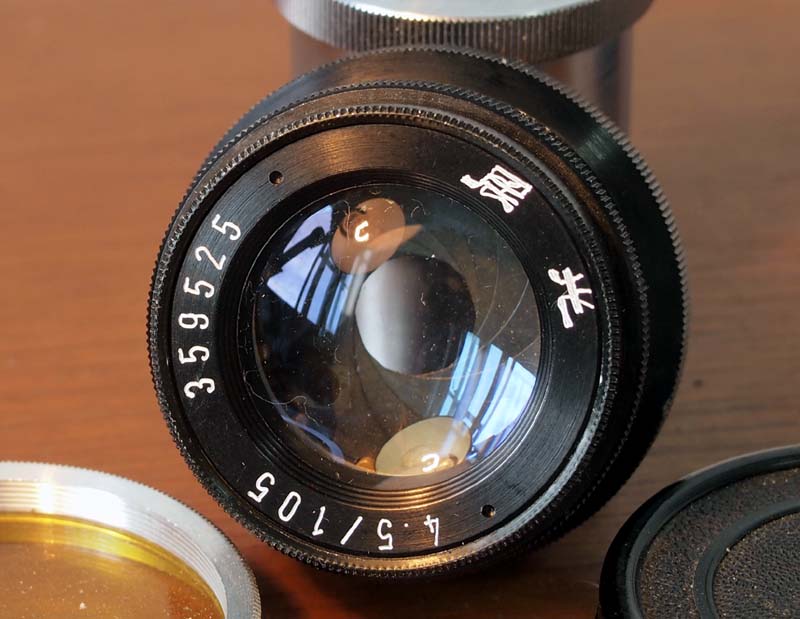 |
|
| Back to top |
|
 |
luisalegria


Joined: 07 Mar 2008
Posts: 6602
Location: San Francisco, USA
Expire: 2018-01-18
|
 Posted: Sat Jun 11, 2016 3:49 pm Post subject: Posted: Sat Jun 11, 2016 3:49 pm Post subject: |
 |
|
luisalegria wrote:
The common American made enlarging lenses of the 1930s-60s made by Wollensak, Kodak, Elgeet, Ilex, Bausch&Lomb all did have the large number of blades as you have, and were almost all Tessar formulas 4/3 also.
But they had no great reputation for optical quality. I doubt the blade count has anything to do with this. Nor for that matter would heavy duty brass build, as almost all of the American lenses had. Lovely things most of them, but looked down on by users of Schneider, Rodenstock or Nikon.
_________________
I like Pentax DSLR's, Exaktas, M42 bodies of all kinds, strange and cheap Japanese lenses, and am dabbling in medium format/Speed Graphic work. |
|
| Back to top |
|
 |
calvin83


Joined: 12 Apr 2009
Posts: 7584
Location: Hong Kong
|
 Posted: Sat Jun 11, 2016 6:38 pm Post subject: Posted: Sat Jun 11, 2016 6:38 pm Post subject: |
 |
|
calvin83 wrote:
The Kodak Ektar enlargers are probably the best one in the market on early 1950s..... The chrome Schneider enlargers had many blades too.
_________________
The best lens is the one you have with you.
https://lensfever.com/
https://www.instagram.com/_lens_fever/ |
|
| Back to top |
|
 |
kievuser

Joined: 27 Jan 2008
Posts: 551
|
 Posted: Sat Jun 11, 2016 10:54 pm Post subject: Posted: Sat Jun 11, 2016 10:54 pm Post subject: |
 |
|
kievuser wrote:
| luisalegria wrote: |
The common American made enlarging lenses of the 1930s-60s made by Wollensak, Kodak, Elgeet, Ilex, Bausch&Lomb all did have the large number of blades as you have, and were almost all Tessar formulas 4/3 also.
But they had no great reputation for optical quality. I doubt the blade count has anything to do with this. Nor for that matter would heavy duty brass build, as almost all of the American lenses had. Lovely things most of them, but looked down on by users of Schneider, Rodenstock or Nikon. |
Thanks for the input. I guess my term of 'foreign' was too broad. I had no experience with those early American made enlarging lenses. A couple of days ago,I read a test report by a Chinese writer who tested 27 Chinese, German and Japanese enlarging lenses that also gave an account of aperture blades. I was referring to these lenses. He mentioned a Chinese ChenGuang brand lens that was among the top five including 3 German APO ones in terms of resolving power. The other one is a Konica lens. This is a surprise to me. These Chinese enlarging lenses could be found for less than 10 US dollars used in Beijing, while those German APO ones usually cost many hundreds if not thousands US dollars. |
|
| Back to top |
|
 |
kievuser

Joined: 27 Jan 2008
Posts: 551
|
 Posted: Sat Jun 11, 2016 11:08 pm Post subject: Posted: Sat Jun 11, 2016 11:08 pm Post subject: |
 |
|
kievuser wrote:
| calvin83 wrote: |
| The Kodak Ektar enlargers are probably the best one in the market on early 1950s..... The chrome Schneider enlargers had many blades too. |
I guess many Chinese ones design were inspired by those early enlarging lenses? Modern German ones usually have no more than 5-6 blades according to the report. |
|
| Back to top |
|
 |
luisalegria


Joined: 07 Mar 2008
Posts: 6602
Location: San Francisco, USA
Expire: 2018-01-18
|
 Posted: Sun Jun 12, 2016 4:59 am Post subject: Posted: Sun Jun 12, 2016 4:59 am Post subject: |
 |
|
luisalegria wrote:
Almost all lenses of the time, enlarging or taking lenses, that had aperture mechanisms, usually had plenty of blades, and almost always had round apertures or nearly round. You will find even very cheap lenses like that.
Yes, I think the Chinese lenses, most of them, were copied from the usual designs common in Germany, the US and Japan.
Also, enlarging lenses in the early days were nearly the same as taking lenses, sometimes exactly the same. Sometimes you can take enlarging lens cells from a given manufacturer and simply screw them into the right size shutter from that manufacturer, the cell spacing is exact. I have done this with Wollensak lenses and shutters.
And of course, enlarging lenses can be used as taking lenses, this is quite common.
I've done quite a lot of that, on digital and on film. Kodak Ektanons (these are mostly Tessars, if they arent triplets; some of the enlarging Ektars had the Heliar formula) and Wollensak Raptars and Ilex Paragons make superb MF/LF portrait lenses.
Later enlarging lenses designs diverged from taking lenses and you will see specialized designs from Schneider, etc. It seems that aperture shape is not so significant for enlarging.
_________________
I like Pentax DSLR's, Exaktas, M42 bodies of all kinds, strange and cheap Japanese lenses, and am dabbling in medium format/Speed Graphic work. |
|
| Back to top |
|
 |
kievuser

Joined: 27 Jan 2008
Posts: 551
|
 Posted: Sun Jun 12, 2016 3:06 pm Post subject: Posted: Sun Jun 12, 2016 3:06 pm Post subject: |
 |
|
kievuser wrote:
luisalegria, Many thanks for a detailed explanation about early enlarging lenses. We are lucky on this forum to have a few lens experts, and many experienced lens collectors, and fine vintage lens fans. IMO, those fine vintage optics have a long lasting value. That test report mentioned earlier said that the three APO enlarging lenses have a resolving power that exceeds that of the best phtographic prime lenses. |
|
| Back to top |
|
 |
Opticus

Joined: 16 Jan 2012
Posts: 73
|
 Posted: Sun Jun 12, 2016 8:10 pm Post subject: Posted: Sun Jun 12, 2016 8:10 pm Post subject: |
 |
|
Opticus wrote:
--
Last edited by Opticus on Sun Aug 21, 2016 7:22 pm; edited 1 time in total |
|
| Back to top |
|
 |
Opticus

Joined: 16 Jan 2012
Posts: 73
|
 Posted: Sun Jun 12, 2016 8:16 pm Post subject: Posted: Sun Jun 12, 2016 8:16 pm Post subject: |
 |
|
Opticus wrote:
--
Last edited by Opticus on Sun Aug 21, 2016 7:22 pm; edited 1 time in total |
|
| Back to top |
|
 |
kievuser

Joined: 27 Jan 2008
Posts: 551
|
 Posted: Mon Jun 13, 2016 2:51 am Post subject: Posted: Mon Jun 13, 2016 2:51 am Post subject: |
 |
|
kievuser wrote:
Opticus, Many thanks for the information..  |
|
| Back to top |
|
 |
kievuser

Joined: 27 Jan 2008
Posts: 551
|
 Posted: Mon Jun 13, 2016 8:36 am Post subject: Posted: Mon Jun 13, 2016 8:36 am Post subject: |
 |
|
kievuser wrote:
This Great Wall brand 50/3.5 enlarging lens is not rare, but with a unique construction. It has a window for aperture numbers, and it has so many blades for a small lens.
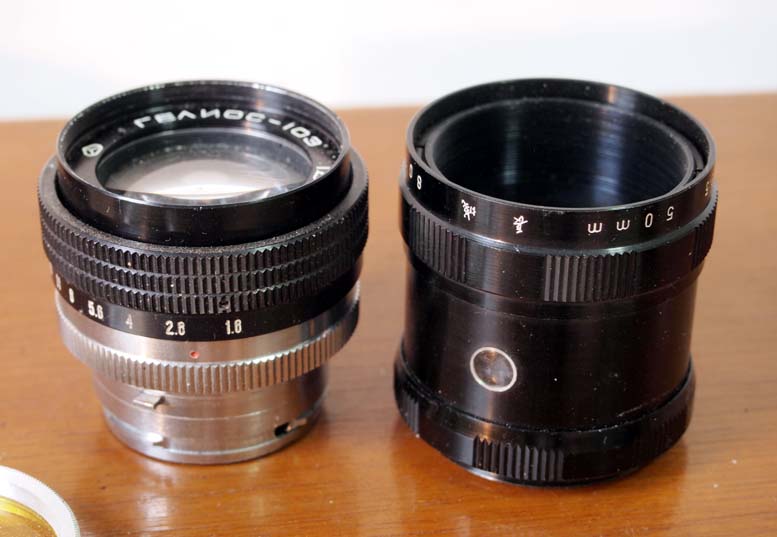 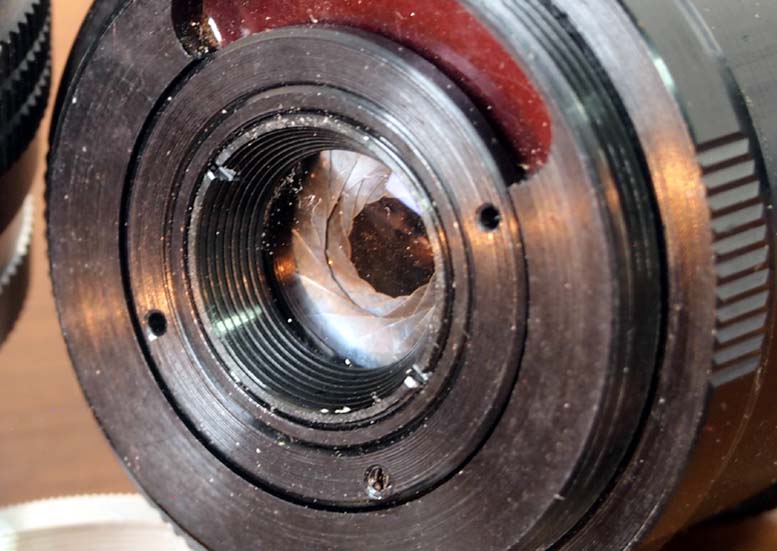 |
|
| Back to top |
|
 |
Oldhand


Joined: 01 Apr 2013
Posts: 6005
Location: Mid North Coast NSW - Australia
|
 Posted: Mon Jun 13, 2016 8:41 am Post subject: Posted: Mon Jun 13, 2016 8:41 am Post subject: |
 |
|
Oldhand wrote:
Is that a double iris?
I wonder why.
OH |
|
| Back to top |
|
 |
kievuser

Joined: 27 Jan 2008
Posts: 551
|
 Posted: Mon Jun 13, 2016 8:50 am Post subject: Posted: Mon Jun 13, 2016 8:50 am Post subject: |
 |
|
kievuser wrote:
Some special lenses could also be used for taking photos. 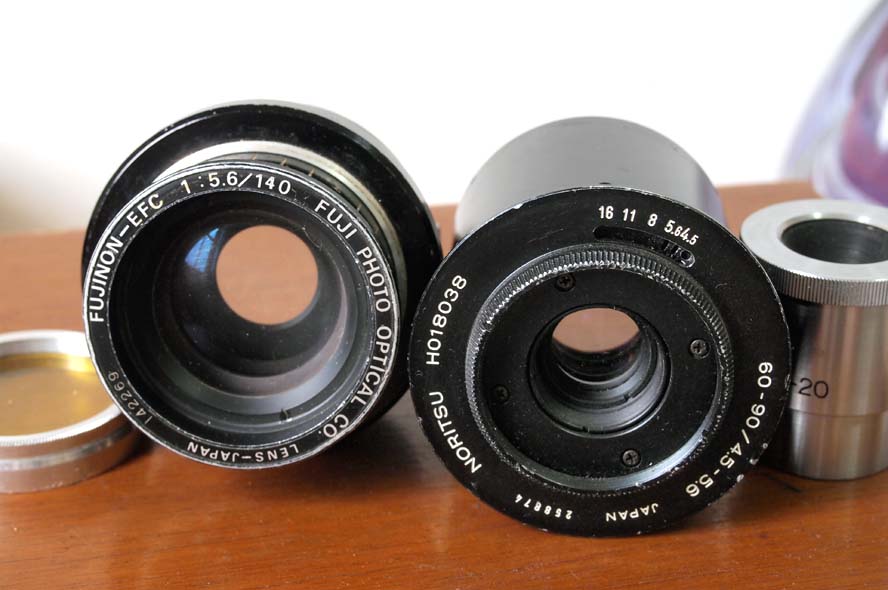 |
|
| Back to top |
|
 |
kievuser

Joined: 27 Jan 2008
Posts: 551
|
 Posted: Mon Jun 13, 2016 8:56 am Post subject: Posted: Mon Jun 13, 2016 8:56 am Post subject: |
 |
|
kievuser wrote:
A dual-purpose conversion lens. X0.80 or X1.25.
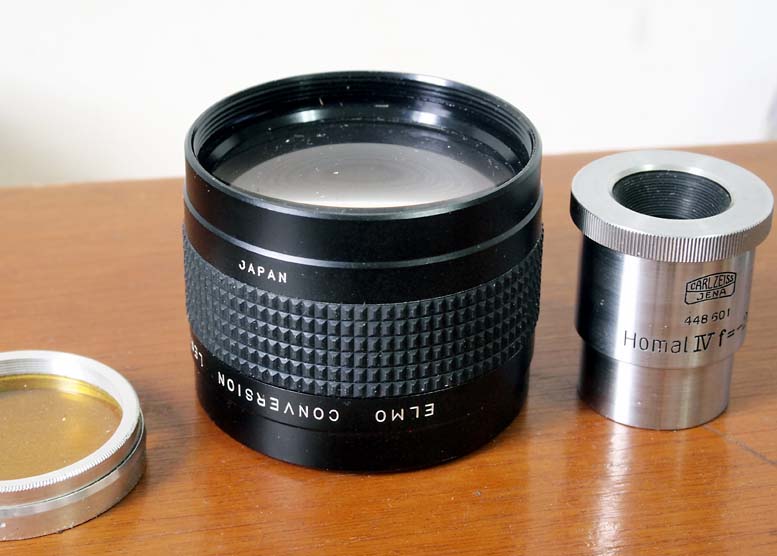 |
|
| Back to top |
|
 |
kievuser

Joined: 27 Jan 2008
Posts: 551
|
 Posted: Mon Jun 13, 2016 10:04 am Post subject: Posted: Mon Jun 13, 2016 10:04 am Post subject: |
 |
|
kievuser wrote:
| Oldhand wrote: |
| kievuser wrote: |
This Great Wall brand 50/3.5 enlarging lens is not rare, but with a unique construction. It has a window for aperture numbers, and it has so many blades for a small lens.
。。。。。。。
|
Is that a double iris?
I wonder why.
OH |
No, if you look from the front. I don't understand it either, unless it is an exact copy of something. Why 15 blades for a very small lens? |
|
| Back to top |
|
 |
kds315*


Joined: 12 Mar 2008
Posts: 16664
Location: Weinheim, Germany
Expire: 2021-03-09
|
 Posted: Mon Jun 13, 2016 11:21 am Post subject: Posted: Mon Jun 13, 2016 11:21 am Post subject: |
 |
|
kds315* wrote:
| Oldhand wrote: |
Is that a double iris?
I wonder why.
OH |
Not it is not, the special form of the aperture blades results in this.
Very round iris is achieved by this, leading to smooth OOF areas.
_________________
Klaus - Admin
"S'il vient a point, me souviendra" [Thomas Bohier (1460-1523)]
http://www.macrolenses.de for macro and special lens info
http://www.pbase.com/kds315/uv_photos for UV Images and lens/filter info
https://www.flickr.com/photos/kds315/albums my albums using various lenses
http://photographyoftheinvisibleworld.blogspot.com/ my UV BLOG
http://www.travelmeetsfood.com/blog Food + Travel BLOG
https://galeriafotografia.com Architecture + Drone photography
Currently most FAV lens(es):
X80QF f3.2/80mm
Hypergon f11/26mm
ELCAN UV f5.6/52mm
Zeiss UV-Planar f4/60mm
Zeiss UV-Planar f2/62mm
Lomo Уфар-12 f2.5/41mm
Lomo Зуфар-2 f4.0/350mm
Lomo ZIKAR-1A f1.2/100mm
Nikon UV Nikkor f4.5/105mm
Zeiss UV-Sonnar f4.3/105mm
CERCO UV-VIS-NIR f1.8/45mm
CERCO UV-VIS-NIR f4.1/94mm
CERCO UV-VIS-NIR f2.8/100mm
Steinheil Quarzobjektiv f1.8/50mm
Pentax Quartz Takumar f3.5/85mm
Carl Zeiss Jena UV-Objektiv f4/60mm
NYE OPTICAL Lyman-Alpha II f1.1/90mm
NYE OPTICAL Lyman-Alpha I f2.8/200mm
COASTAL OPTICS f4/60mm UV-VIS-IR Apo
COASTAL OPTICS f4.5/105mm UV-Micro-Apo
Pentax Ultra-Achromatic Takumar f4.5/85mm
Pentax Ultra-Achromatic Takumar f5.6/300mm
Rodenstock UV-Rodagon f5.6/60mm + 105mm + 150mm
Last edited by kds315* on Mon Jun 13, 2016 11:23 am; edited 1 time in total |
|
| Back to top |
|
 |
kds315*


Joined: 12 Mar 2008
Posts: 16664
Location: Weinheim, Germany
Expire: 2021-03-09
|
 Posted: Mon Jun 13, 2016 11:21 am Post subject: Posted: Mon Jun 13, 2016 11:21 am Post subject: |
 |
|
kds315* wrote:
| kievuser wrote: |
Some special lenses could also be used for taking photos.  |
Well known printer lenses for printing images from negatives (not rare)
_________________
Klaus - Admin
"S'il vient a point, me souviendra" [Thomas Bohier (1460-1523)]
http://www.macrolenses.de for macro and special lens info
http://www.pbase.com/kds315/uv_photos for UV Images and lens/filter info
https://www.flickr.com/photos/kds315/albums my albums using various lenses
http://photographyoftheinvisibleworld.blogspot.com/ my UV BLOG
http://www.travelmeetsfood.com/blog Food + Travel BLOG
https://galeriafotografia.com Architecture + Drone photography
Currently most FAV lens(es):
X80QF f3.2/80mm
Hypergon f11/26mm
ELCAN UV f5.6/52mm
Zeiss UV-Planar f4/60mm
Zeiss UV-Planar f2/62mm
Lomo Уфар-12 f2.5/41mm
Lomo Зуфар-2 f4.0/350mm
Lomo ZIKAR-1A f1.2/100mm
Nikon UV Nikkor f4.5/105mm
Zeiss UV-Sonnar f4.3/105mm
CERCO UV-VIS-NIR f1.8/45mm
CERCO UV-VIS-NIR f4.1/94mm
CERCO UV-VIS-NIR f2.8/100mm
Steinheil Quarzobjektiv f1.8/50mm
Pentax Quartz Takumar f3.5/85mm
Carl Zeiss Jena UV-Objektiv f4/60mm
NYE OPTICAL Lyman-Alpha II f1.1/90mm
NYE OPTICAL Lyman-Alpha I f2.8/200mm
COASTAL OPTICS f4/60mm UV-VIS-IR Apo
COASTAL OPTICS f4.5/105mm UV-Micro-Apo
Pentax Ultra-Achromatic Takumar f4.5/85mm
Pentax Ultra-Achromatic Takumar f5.6/300mm
Rodenstock UV-Rodagon f5.6/60mm + 105mm + 150mm
|
|
| Back to top |
|
 |
kievuser

Joined: 27 Jan 2008
Posts: 551
|
 Posted: Mon Jun 13, 2016 3:27 pm Post subject: Posted: Mon Jun 13, 2016 3:27 pm Post subject: |
 |
|
kievuser wrote:
| kds315* wrote: |
| kievuser wrote: |
Some special lenses could also be used for taking photos.
。。。。。。 |
Well known printer lenses for printing images from negatives (not rare) |
Yes, I thought they were removed from those one-hour lab machines.
I know that you own a Zeiss S-Orthoplanar 60/4. I just saw some images shot with this lens, and the owner said that it was sharper than a Rodagon-G, one of the best enlarging lenses. I suspect that the Haiou 64 58/5.6 reduction lens was made for the same applications. I believe the Zeiss S-Orthoplanar must have been a very expensive lens when new?
The images I shot with the Haiou were similar to the Zeiss ones.  I need to buy a better camera to explore the potential of this rare lens. I need to buy a better camera to explore the potential of this rare lens. |
|
| Back to top |
|
 |
|
|
